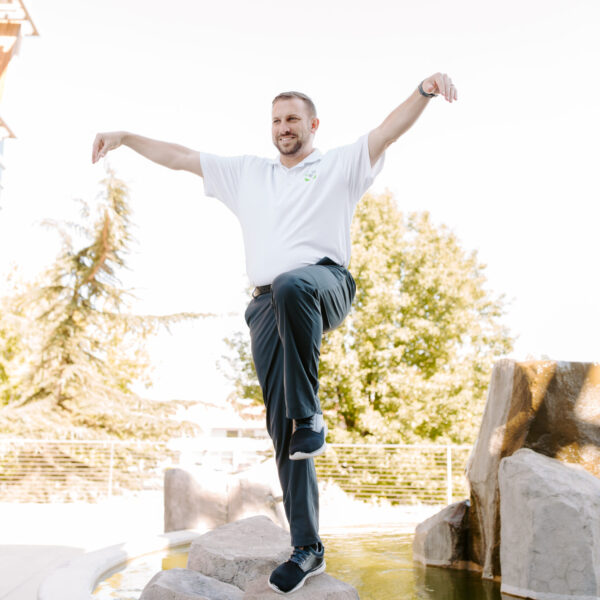Your property can be taken from you even though you have ostensibly done nothing wrong. You have paid your bills and you are current on your taxes and you have exercised customary precautions in the acquisition and ownership of your property. Whether you like it or not, whether it’s fair or not, the law allows a person to be divested from his or her ownership in real property through a legal concept called Adverse Possession. Conversely, the law also allows a person to gain ownership of another’s real property through the same legal concept.
In the abstract, it is almost unthinkable that this should be allowed. How can a person simply take ownership of your property? An example helps to illustrate the legal concept and its application.
Let’s assume that Kim and Khloe each purchase a lot in a new housing development. The lots are adjacent to each other. Each walk the advertised quarter acre lot. Each gets standard title insurance on the purchase. And, each builds her dream home on the site and shares in the cost of a beautiful 6-foot stone fence on the property line. Unbeknownst to both Kim and Khloe, the property line separating the two lots was misrepresented. Somehow, some way, the line had been moved 10 feet onto Kim’s property – encroaching on Kim’s property. Khloe ends up building a shed on “her” property (which is actually on Kim’s property). The two are fine neighbors. Fifteen years later, Kim tries to sell her property. The extra cautious buyer demands a survey to confirm the property dimensions and the property line. Lo and behold, the survey reveals the truth – Khloe’s 10-foot incursion onto Kim’s property. Should Khloe now be required to move the block fence and the shed that she has used for 15 years? The law would likely say that Khloe is now the owner of the 10-foot strip of land and she need not move the shed or the fence. Such is the purpose of the Adverse Possession law.
A few requirements for the application of the law are evident in the above example. First, the land must be possessed for a long time (generally 7-10 years). Second, the party claiming adverse possession must possess the land in a manner that is: (1) open and notorious – that Kim knew Khloe was on the 10-foot strip (regardless of whether Kim knew it was her land); (2) actual and uninterrupted – that Khloe used the land continuously; (3) exclusive – that only Khloe used the land; and (4) hostile – that Khloe treated the land as her own. Gorman v. City of Woodinville, 175 Wn.2d 68, 283 P.3d 1082 (2012).
The doctrine of Adverse Possession arose through the courts – sometimes called the common law. The aim of the doctrine to “serv[e] specific policy concerns that title to land should not long be in doubt, that society will benefit from someone’s making use of land the owner leaves idle, and that third persons who come to regard the occupant as owner may be protected.” Stoebuck, Adverse Possession in Washington, 35 Wash.L.Rev. 53 (1960).
The example above of the divestiture of the 10-foot strip of land from Kim and the actual vesting of title in the same strip to Khloe is just the tip of the iceberg. The law allows the application of Adverse Possession against entire swaths of land, to form ingress or egress easements, to establish easements for electric and cable and water lines, or to otherwise modify property ownership rights.
So, what is a property owner to do? As noted above, a great place to start is with a survey to double-check the perceived boundary lines. When acquiring property, you can get extended title coverage (for a higher premium cost) which would include a survey to protect against encroachment. A property owner should also regularly review the property (walk the entirety of the property) to ensure there are no squatters or unauthorized uses evident. An owner can put up fences to keep people off property – especially to prevent easements across the property. Though it goes against everything you think you should do, it might actually be better to enter into an agreement to allow the trespass rather than trying to forbid it. For example, had Kim known about the property encroachment (through survey) and permitted Khloe to use the land, the above cited element of “hostility” would be lacking and Khloe would then not be permitted to vest ownership of the strip in her name. This might apply to business parking lots, for example, and allow one business owner a parking easement on another’s property. If you own a business and another business parks cars on your property – maybe you either stop it (which might hurt the relationship) or allow it by agreement. Either would likely preclude the application of Adverse Possession.
387663-2
* Licensed, not practicing.
The opinions voiced in this material are for general information only and not intended to provide specific advice or recommendations for any individual or entity. This information is not intended to be a substitute for specific individualized tax or legal advice. We suggest that you discuss your specific situation with a qualified tax or legal advisor.
Securities offered through LPL Financial, Member FINRA/SIPC. Investment Advice offered through Cornerstone Wealth Strategies, Inc., a registered investment advisor and separate entity from LPL Financial.












